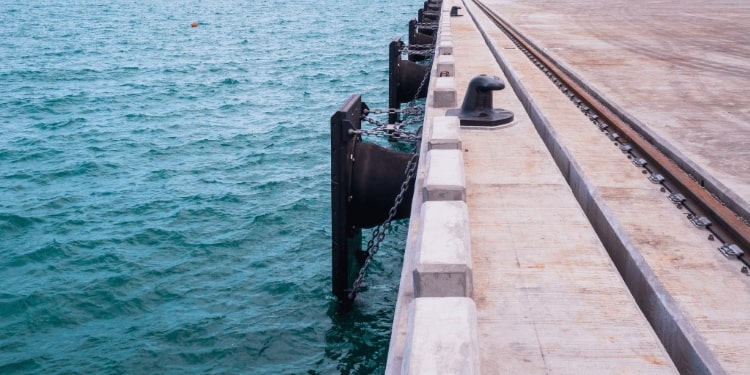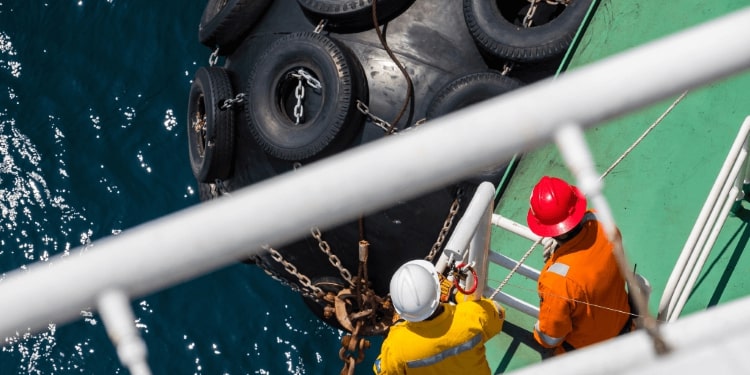Marine fenders prevent boats from being damaged by rubbing or impacting when docking or when tied up. Also, they prevent damage from other boats - should multiple vessels be rafted together. They’re a vital piece of marine equipment that all boats should have, they provide adequate protection and ensure the impact of any collision is minimised.
Should your boat not be equipped with the right fender type or your fenders aren’t maintained properly, you could be faced with various potential problems. Boat fenders can be customised to suit boats of all shapes and sizes. So, you’re sure to find something that meets your needs and requirements.
In this post, we’ll explain everything you need to know about boat fenders. From a more in-depth view of what they are and how they’re used to the different types and how to choose the right fender type for your boat.
We’ll cover:
What is a Boat Fender?
The 5 Main Types of Boat Fendering
Problems You Could Face With Poor Fender Maintenance
How to Choose the Right Fender For Your Boat
What is a Boat Fender?
Boat fenders are designed to protect boats when docking - and the dock itself. They’re specially designed to provide a cushioned effect for boats when they experience any type of collision. As we’ve mentioned, this could be when docking, rubbing up against the dock when tied up or with another vessel if moored together.
Marine fenders preserve the condition of the body of a boat. They're a piece of essential equipment - that way, the hull of your boat always stays intact. From ships and large vessels to leisure boats and tugs, marine fenders are a necessity and provide benefits for a wide array of boat types.
To provide adequate protection, boat fenders need to be robust, custom made, have a high energy absorption capacity and built to last. They’re designed to have a long product life, otherwise, you’d need to constantly replace them - unnecessary regular maintenance will hike up your costs.
Marine fenders can be manufactured in a variety of ways - it all depends on your needs and requirements. Rubber, foam elastomer and plastic are the most popular materials that boat fenders are made out of. Of course, each material provides its unique advantages and disadvantages.

The 5 Main Types of Boat Fendering
There are many different types of boat fendering - each one has its own purpose and they’re suitable for different boats, docking conditions and more. All boat fenders are constructed for increased protection, that way, all boats, vessels and ships can dock (and remain docked) safely without causing any damage.
All fenders must be carefully designed to absorb the kinetic energy on impact, that way, the condition of the boat isn’t hampered at all. The main types of boat fendering include:
Cell. These are the most popular fenders in the industry - they’re suitable for larger boats and can deflect 50 percent of the impact when docking or colliding with another vessel.
Cone. Similar to the cell fender, cone fenders are incredibly versatile and can be used for a wide variety of mooring conditions. Expect them to be used on large vessels, for example, tankers and cruise ships.
Pneumatic. These are the simplest and cheapest form of fendering - they’re commonly used by the offshore industry and are designed to be transferred from one ship to another.
Arch. These fenders are used for smaller mounting spaces and work well against small or mid-sized ships or boats.
Pile. A boat or ship will glide along a pile fender seamlessly, ensuring a controlled impact during collisions.
Problems You Could Face With Poor Fender Maintenance
Quite simply, without the right protection, you’re an accident waiting to happen - which isn’t an ideal situation to be in. Collisions, whether with the dockside or another vessel, can be incredibly costly. Not only will you have to cover the repair costs for the damage but your boat will be out of the water too - which will hamper any level of business operation.
As we mentioned earlier, unnecessary regular maintenance will increase your running costs. For any business, this is the opposite of what you want to achieve. By regularly checking and keeping on top of the condition of your boat fenders, they’re likely to last a lot longer than if you neglect them.
Luckily, replacing marine fendering is easily done. When carrying out regular routine checks, you should always make sure that your fenders are in the best condition to provide maximum protection. If they’re broken or show signs of serious wear and tear, replacing them will maximise the overall longevity of your boat.

Not only do you have to consider the repercussions of poor fendering for your boat’s sake but anybody onboard too. Should your boat be poorly protected, you’re automatically risking the health of those onboard. To ensure that you’re keeping everybody safe - from those working onboard or any passengers - you need to possess adequate protection levels.
Fendering needs to be carefully considered. The different types of fendering all have their own purpose - there’s no one size fits all approach that works. With that in mind, you can’t apply any type of fendering to your boat and expect it to work properly.
By cutting corners and not paying attention to all considerations, you could purchase the wrong fendering and need to reinvest - hiking up your running costs further.
How to Choose the Right Fender For Your Boat
Size and Weight
You must consider the size and weight of your boat. As a general rule, the bigger your boat is, the more fendering you’ll require. Smaller boats may only require a few fenders fitting, whereas those over 40-feet will need considerably more. You need to ensure that your boat is fully protected, so you must pay close attention to the number of fenders you need.
The heavier your boat is, the more force it will take to stop. Therefore, the heavier the impact is when docking. Again, this must be considered when choosing the perfect fender applications for your boat. After all, you don’t want to apply a range of unsuitable fenders that are going to lead to a large amount of damage, do you?
Mooring Conditions
Colliding when docking is unfortunately a collision that you can’t avoid - but that’s why your fenders are there, to cushion the impact. When choosing the right fenders to suit your boat, you should consider the mooring conditions that you’ll regularly be docking in.
Are you going to be moored against a fixed object? Or another floating vessel? Without the right fendering application, the hull of your boat will quickly become damaged and you’ll be left with further repair costs - as well as time out of the water.
Aesthetics
For tug boats (designed to withstand frequent impact and heavier collisions), the aesthetics of your fendering isn’t usually the main concern. Whereas, for leisure yacht or holiday boat owners, you’re not going to want to put ugly fendering on a nice looking boat, are you? So, depending on what type of boat you own, you should consider the aesthetics of your fendering.
Of course, this is just personal preference. However, a lot of boat owners don’t want to be the “not so” proud owners of a monstrous-looking leisure yacht.
Find Out More About Marine Rubber Fendering - Today!
As touched on earlier, rubber is one of the most common marine fendering materials. With that being said, what benefits does it offer? And why do a lot of boat owners opt to side with rubber over plastic and foam elastomer?
Don’t worry if you’re not sure, we’ve explained everything you need to know in our FREE comprehensive guide on marine rubber fendering. From the key advantages of rubber fendering and how it compares to the other materials to how much it costs, it’s all in there for you.
However, we’re just adding the finishing touches to it - it’s coming soon! In the meantime, for any questions and queries you may have, please don’t hesitate to contact our expert team - they’re always on hand to help.